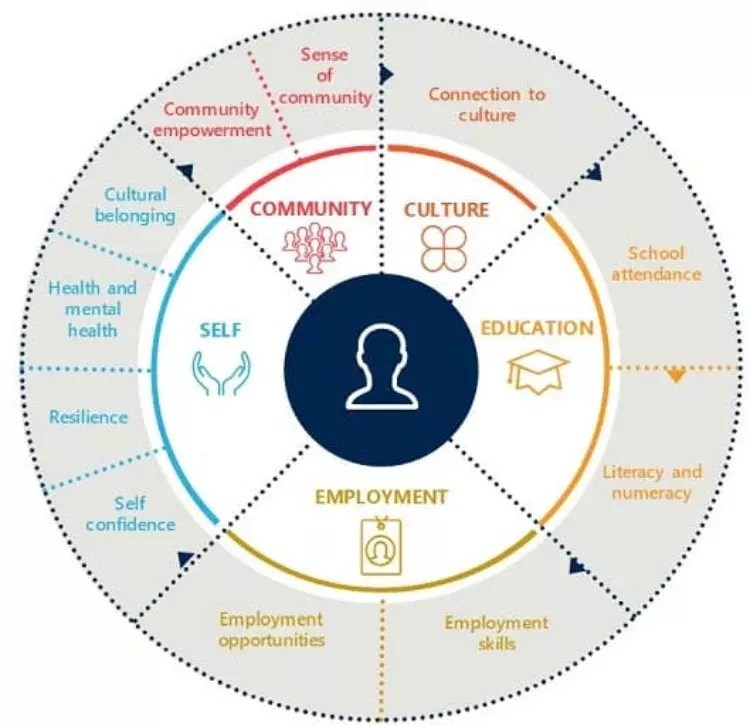The Western Cape Communities Trust supports 11 Traditional Owner groups and Indigenous communities in western Cape York, Queensland. It supports these remote communities across culture and country, community wellbeing, social development, economic development and corporate management.
Fresh ideas to improve service delivery were sought
The Trust saw that in Napranum, a community it served, services were not meeting the full needs of the community. The Trust was seeking fresh ideas for a service delivery model in Napranum that would better respond to community need, improve engagement with young people and increase health and wellbeing.
Time in community revealed needs, gaps and overlaps
Successful service delivery needs to closely involve the people it is intended to reach, so Nous took a community-centred approach to designing the model. Working in partnership with the Police Citizens Youth Club (PCYC), Nous consultants with experience in Indigenous communities undertook two week-long visits to meet with community members, local service providers and community leaders.
During these visits we spent time with people in the environments in which they were most comfortable, taking time to build connections and appreciate the context in which services are delivered. Spending time in the community enabled us to understand how the community worked and the issues faced by individuals and families. It also allowed us to meet with a range of people, including elders and service providers, and have multiple conversations over a longer period, revealing deep and rich insights. This meant we could develop the service delivery model while understanding community need, rather than starting with services or funding sources and adapting those to the community.
Community need can be separated into five areas
These valuable consultations helped us to identify community needs, as well as the overlaps and gaps in existing services. Using this information, we developed a services map that showed the most suitable way to meet community needs.

Nous worked with PCYC to design a bespoke service delivery model, including strategies to build an active and resilient community, connect to culture, give kids a good education, improve access to employment opportunities and support community members. New programs under the model included a breakfast club for children to attend before school, structured sport activities run after school and in school holidays, and exercise and nutrition programs.
Nous developed a business plan for the delivery model, including a portfolio of activities and service delivery partners.
The new model is being put into practice
Following approval from community stakeholders, the service model is being implemented. The implementation will be closely monitored, and the business plan and service model iterated and refined with the community in a continual active learning process. The model has been designed for the whole community, with programs targeting up to 500 attendees each year.
What you can learn from Western Cape Communities Trust:
A model for service delivery must start with understanding the need, which can only come from consultation with communities. This requires time on the ground to understand local context.
It is best not to treat each service in isolation; instead they need to be part of an integrated package with a coherent service-delivery model, all working together to meet the key community needs identified.
Embedding generational change requires long-term funding certainty, in this case a seven-year funding commitment.
Evaluation after implementation is necessary to identify what is working well and what can be improved. A continuous program of monitoring and evaluation allows for the service delivery model to actively adapt to changing community needs.


